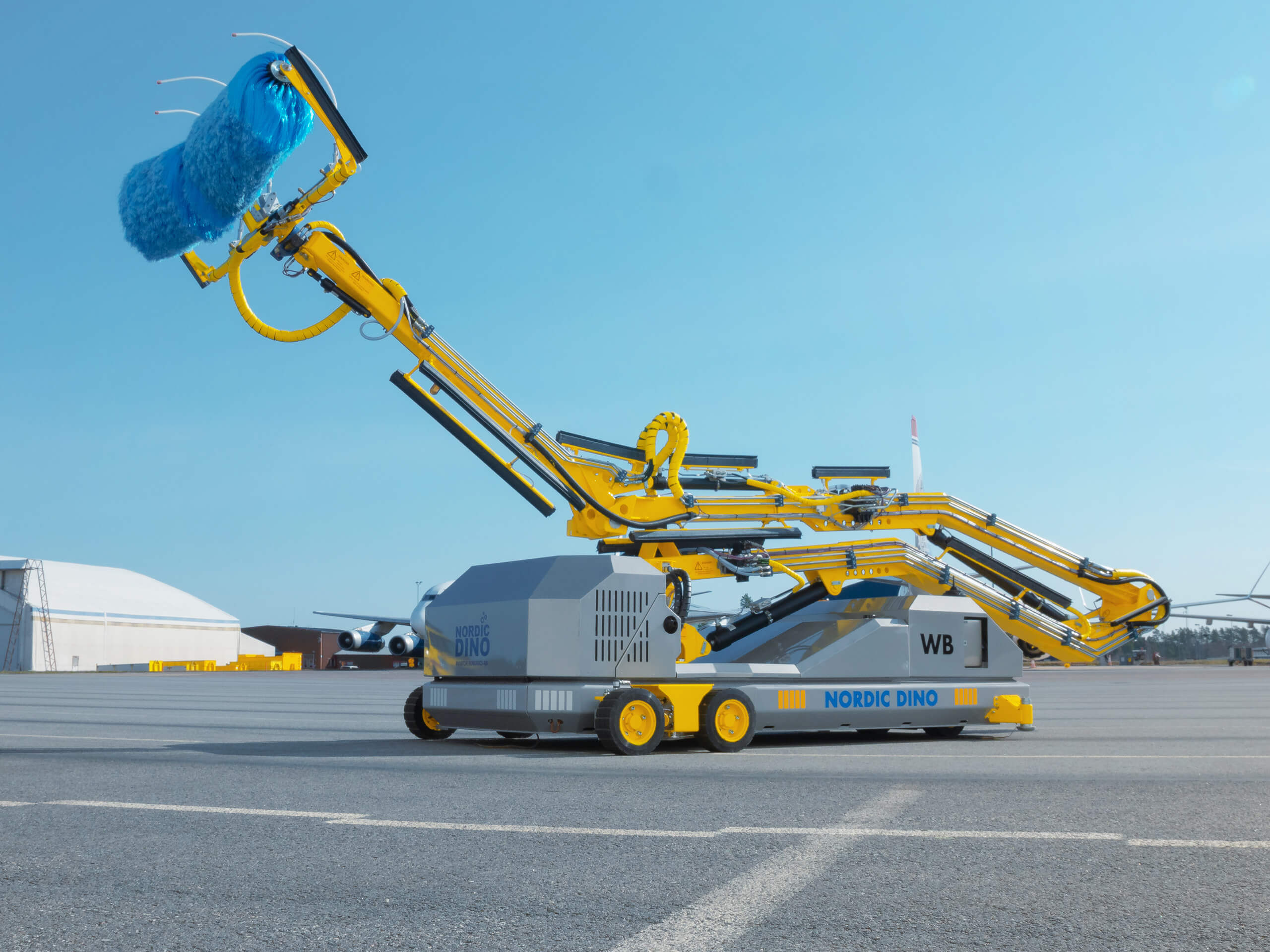 In the aviation industry, aircraft maintenance plays a crucial role in ensuring the safety, reliability, and efficiency of flights. Advanced automation and robotics have found their way into many areas of aircraft maintenance, but some labour-intensive practices like routine washing have remained virtually without change for decades. However, this area is finally getting the technology it deserves, helping airlines cut both aircraft-on-ground times and costs.
In the aviation industry, aircraft maintenance plays a crucial role in ensuring the safety, reliability, and efficiency of flights. Advanced automation and robotics have found their way into many areas of aircraft maintenance, but some labour-intensive practices like routine washing have remained virtually without change for decades. However, this area is finally getting the technology it deserves, helping airlines cut both aircraft-on-ground times and costs.
Jo Alex Tanem, CEO of Nordic Dino Robotics AB, explores why striking the right balance between maintaining high standards of cleanliness and controlling costs is a constant challenge for airlines and how companies like Nordic Dino are contributing value to the aircraft cleaning process.
Importance of Aircraft Maintenance
Aircraft maintenance is not merely about repairing and servicing planes; it is a fundamental aspect of ensuring passenger safety and operational efficiency. Regular maintenance checks contribute to the prevention of potential mechanical failures, enhancing the overall reliability of the aircraft. Additionally, well-maintained aircraft consume fuel more efficiently, thus reducing operational costs and environmental impact. However, aircraft maintenance encompasses more than some might think. For example, aircraft washing is an essential task that needs to be carried out every 60 to 90 days to save fuel, ensure safe operation, and maintain the appearance of the aircraft.
“Efficiency in aircraft maintenance involves streamlining processes to minimize downtime and maximize productivity,” says Tanem. According to him, companies that utilize advanced technologies, predictive maintenance algorithms, and innovative ideas are reducing the need for extensive repairs and avoiding unplanned disruptions to flight schedules.
This is where aircraft-cleaning robots come in to help. “Using the Nordic Dino robots, companies can reduce aircraft exterior cleaning times by up to 80%. In the case of narrow-body jets like the Boeing 737, the required AOG time is reduced from 3 to just 1 hour. Similar time saving happens in the case of wide-body airliners like the Airbus A330 and the Boeing 777, where the AOG time can be dropped from 6 to 2 hours. Knowing how expensive hangar time can be at some airports, the introduction of robot-assisted washing can save an impressive sum over the course of a year,” Tanem explains.
Cost Considerations
While maintaining high standards of cleanliness and safety is paramount, airlines are also focused on managing costs to remain competitive. The challenge lies in finding cost-effective solutions without compromising safety and operational efficiency. “This means finding other ways. They must analyze all their expenses, like fuel, maintenance, staff wages, and office costs. Making wise financial decisions is essential. By being smart with their spending and always considering costs, airlines can maintain safety while also staying financially strong in a competitive industry that's always changing”, explains Tanem.
However, thinking about costs we must consider another part of it – the cost of work-related injuries. “These robots are equipped with advanced technology that enables them to safely operate at elevated positions, eliminating the need for workers to engage in such risky activities," says Tanem. Instead of having individuals scale heights, operators can control these robots remotely from a safe and stable location on the ground and minimize the likelihood of any incident.
At the same time, having a robot on site means that more aircraft can be serviced in the same period. Instead of spending most of their workday on a single aircraft, maintenance crew members can focus on those areas where they bring the most value.
Delivering Value to Airlines and Employees
The integration of the latest technology into aircraft maintenance procedures has revolutionized the way airlines ensure the safety and reliability of their fleets, though some business areas remain untouched. According to Tanem, airlines leverage sophisticated sensor technology strategically placed throughout the aircraft to continuously monitor various. Such sensors collect real-time data on the performance, health, and condition of critical components such as engines, avionics, and airframes. The proactive approach facilitated by technology allows maintenance teams to detect irregularities or signs of wear before they escalate into more significant problems.
“It begs the question of why it is still not a common practice worldwide to employ aircraft cleaning robots. The investment results in an instant and long-lasting reduction in unnecessary maintenance costs and an extension of the overall lifespan of aircraft components. All of this provides significant economic benefits without any trade-offs,” Tanem explains.
To conclude, using aircraft cleaning robots eliminates many risks that are simply impossible to avoid when washing manually. Advanced technologies not only reduce potential liabilities but also save airlines time on the ground, man-hours, and costs. Innovation ensures not only the safety of workers but also enhances the overall efficiency and effectiveness of the aircraft cleaning process.





